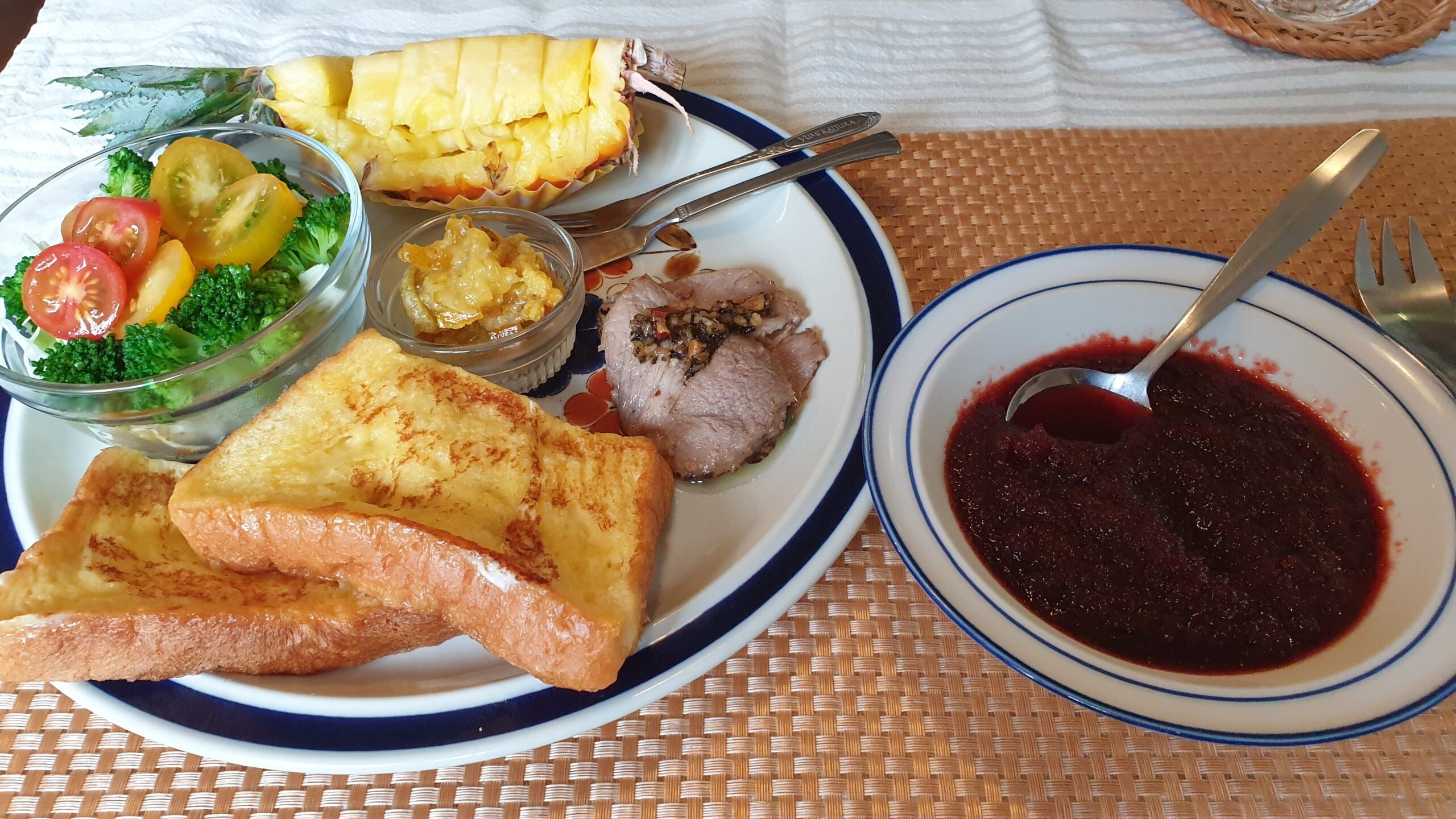
After breakfast, when I say goodbye to my hostess Seira, I go to Shiroma Citrus Garden again. It’s a beautiful sunny day today, so I think I could be luckier. I already know the way and an hour later I am parked in the small parking lot at the farm. At first glance it is empty again, but eventually I find the owner behind the house. I have to start with an apology, because the sudden appearance of a tall European man startles the elderly little Japanese woman. But we soon laugh about it as we try to overcome the language barrier. The printed sign in Japanese with what I’m looking for comes up again, and then communication via the translator on my phone. It’s a good thing we have the technology now.
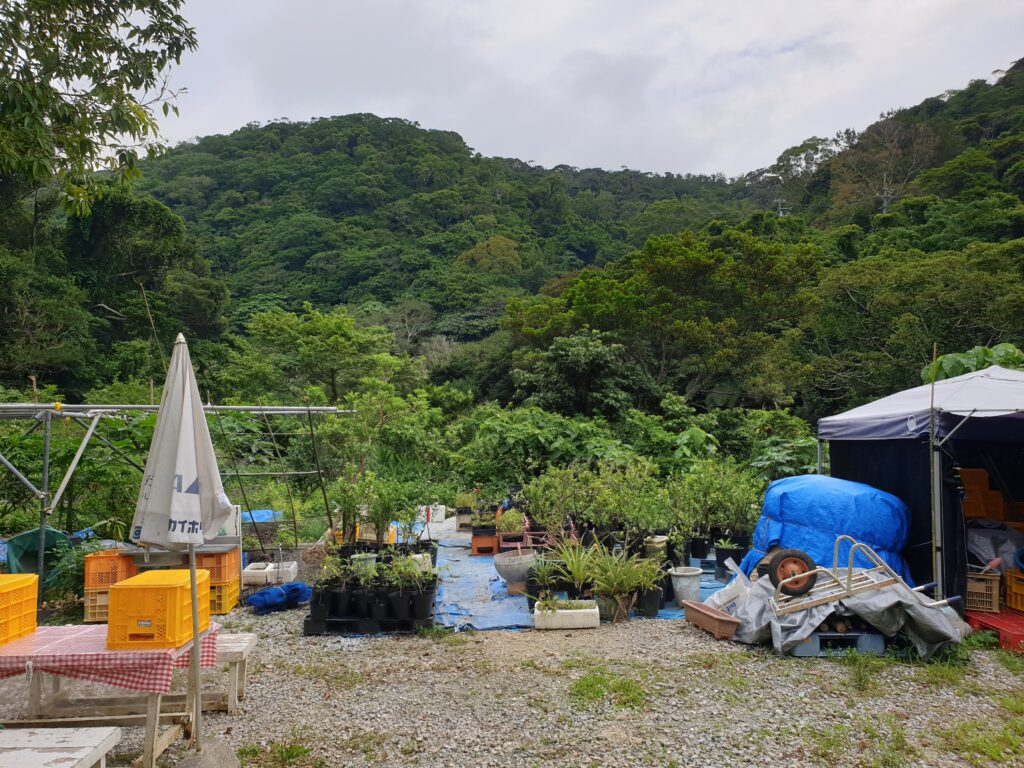

The owner is very helpful and I follow her even though I don’t understand her explanation that well. She takes me through her orchard, showing me the Oto and Tarogayo trees, then we move on to the larger section where Shiikwaasa, Tankan and Kabuchii are. The orchard is surrounded by rainforest, with tall grass growing everywhere. For European conditions, we would say that everything is semi-wild. But this is where it belongs, everything grows lushly and I can’t imagine how an elderly couple owning such a large farm could keep the grass low or mulch the orchard. It probably wouldn’t even make sense.

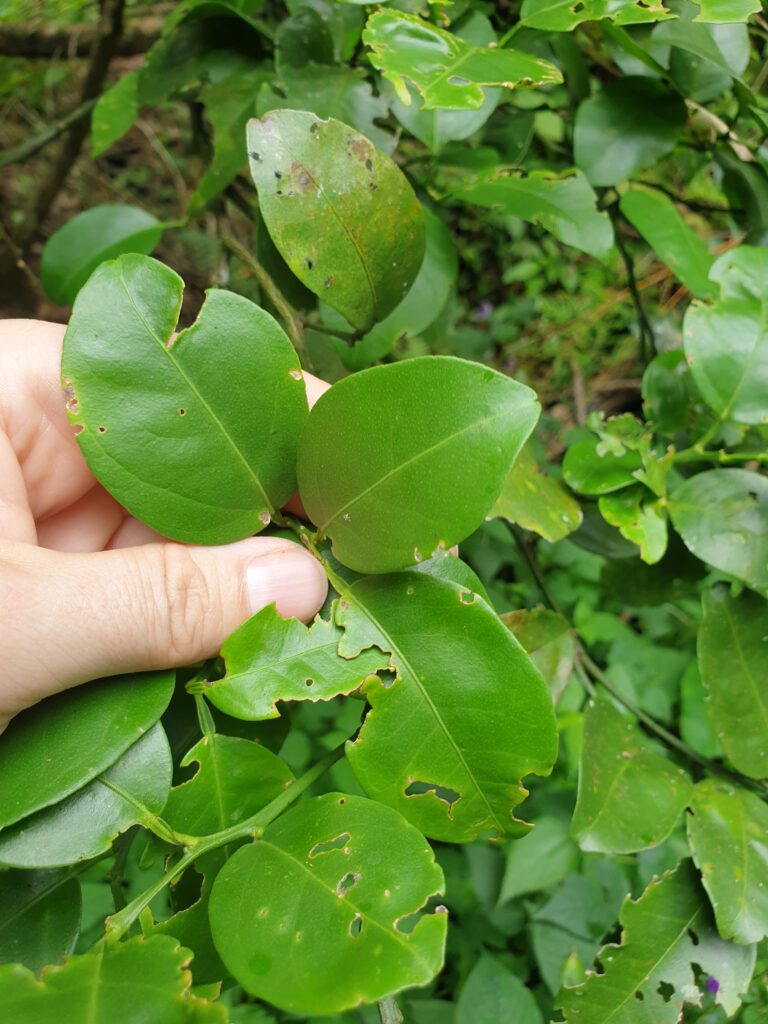
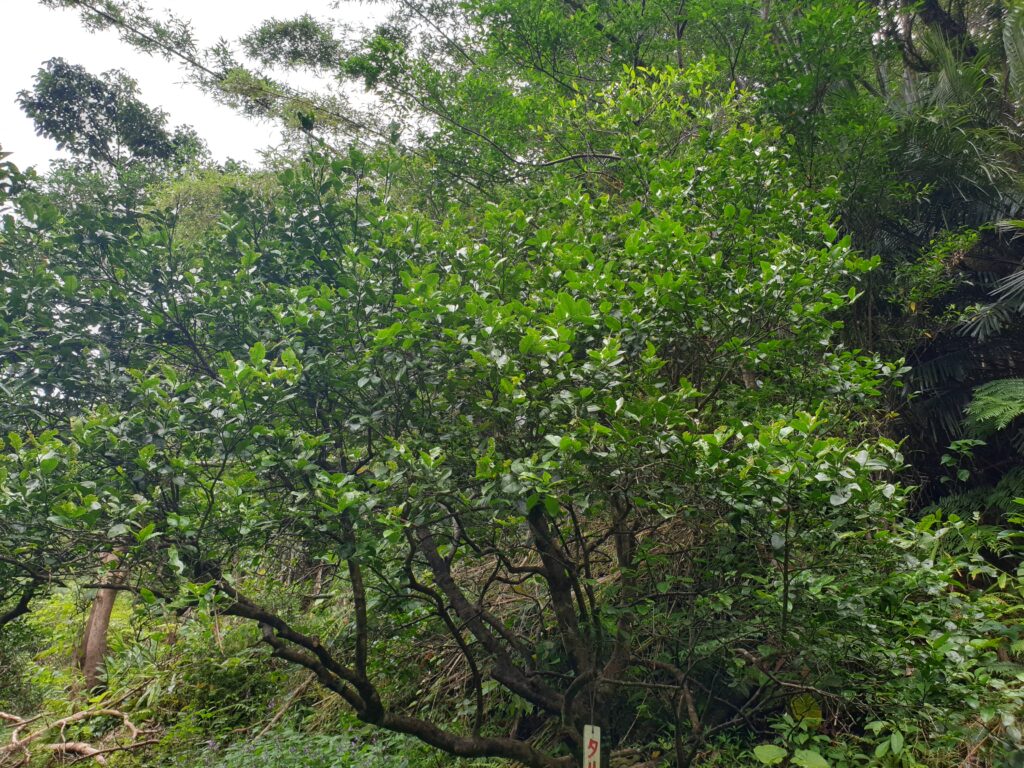
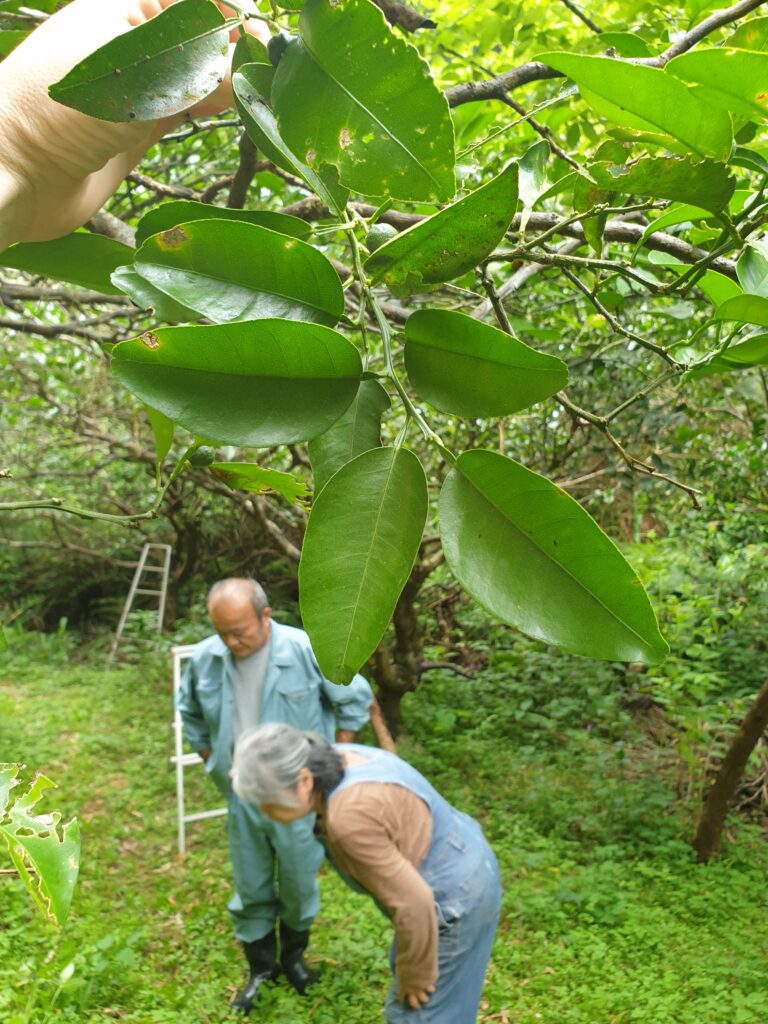
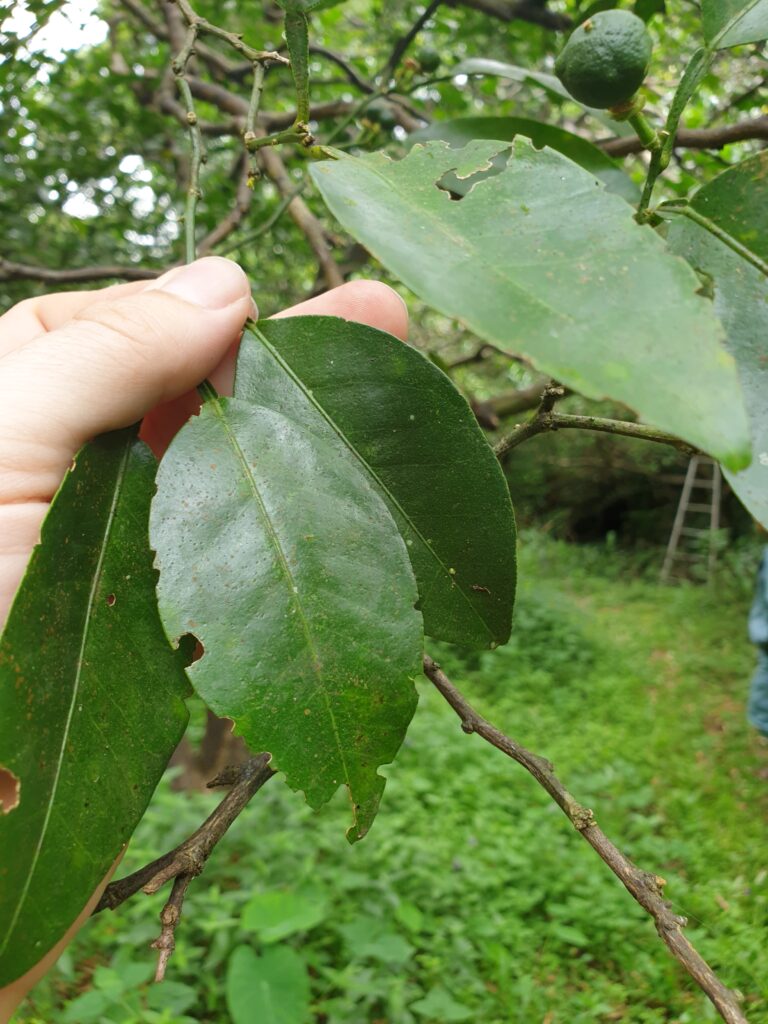

I get to taste the last few fruits of Tankan and Tarogayo. This made me happy because I didn’t expect it at this time of year. All the fruits are very juicy and the taste difference between them is significant. Tankan is very sweet and juicy, Tarogayo is very aromatic and surprisingly also quite sweet – considering I was expecting a sour vinegary mandarin. I gather that at this stage of ripeness, even these mandarins are already sweet. Tankan is not indigenous to the island. It is a species of tangor, which is a natural hybrid of the navel orange Citrus sinensis and the unknown Sunki-type mandarin. It was introduced to Japan from China around 1939 and quickly gained popularity here because of its extreme sweetness. Only later did it begin to be displaced by the Unshiu, mandarin, which is easier to peel and tolerate storing.
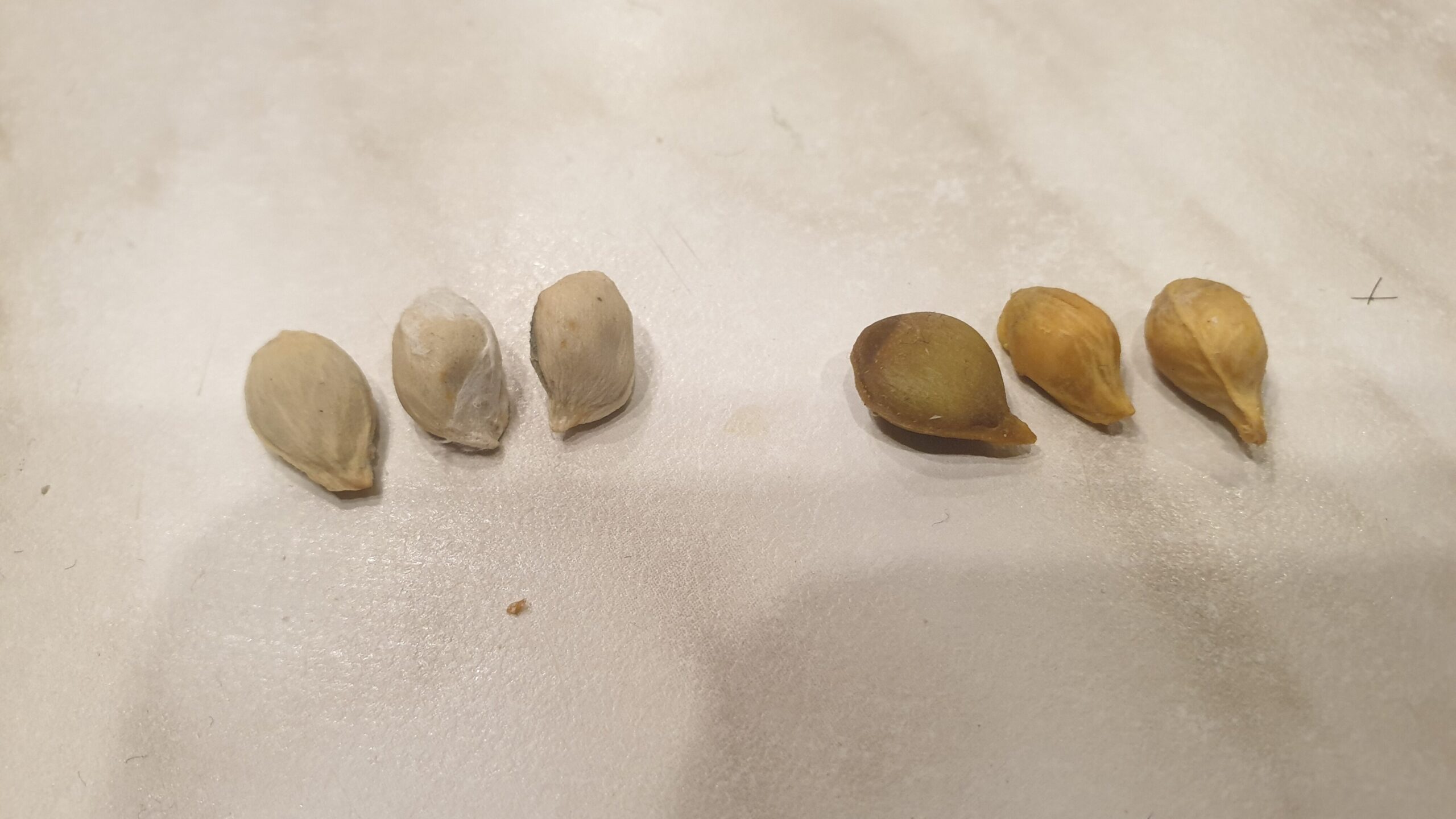
I’m also getting some seeds to show for comparison – and these show the main difference between Tarogayo and Oto, which otherwise have very similar fruits. Tarogayo seeds have a long beak, while Oto seeds lack one. Both of these vinegar mandarins, as well as Kabuchii belong to the Yukunibu group and have the same parents – the Chinese mandarin Kunembo and the local wild mandarin Tanibuta. So they are like siblings in human language.
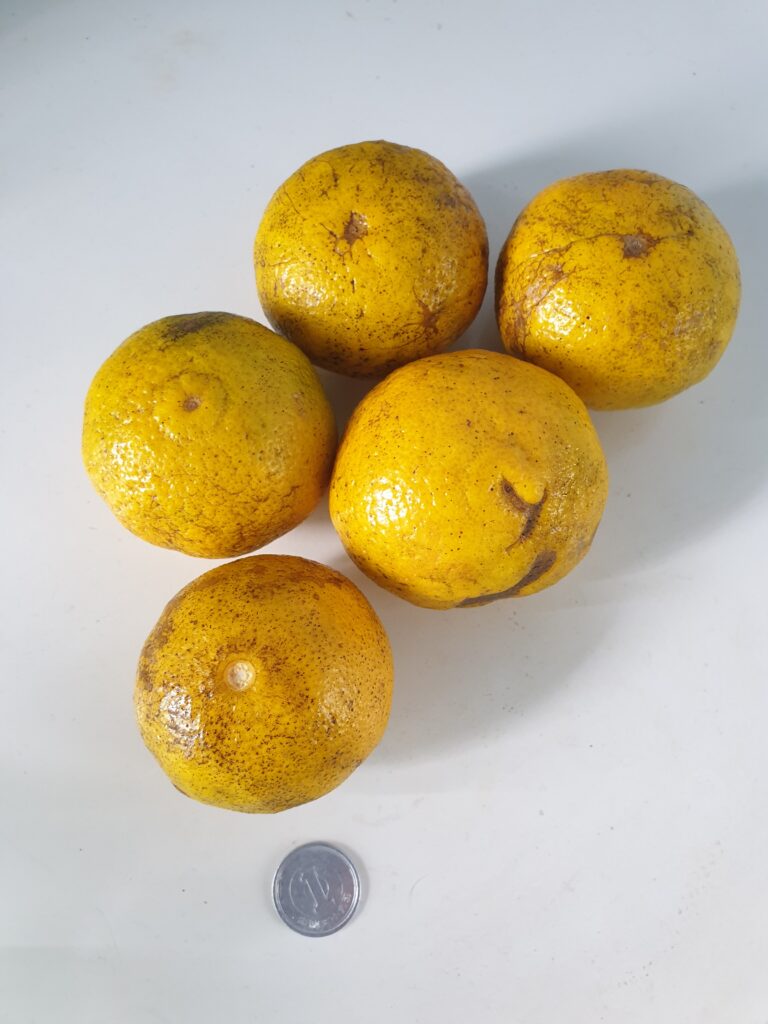
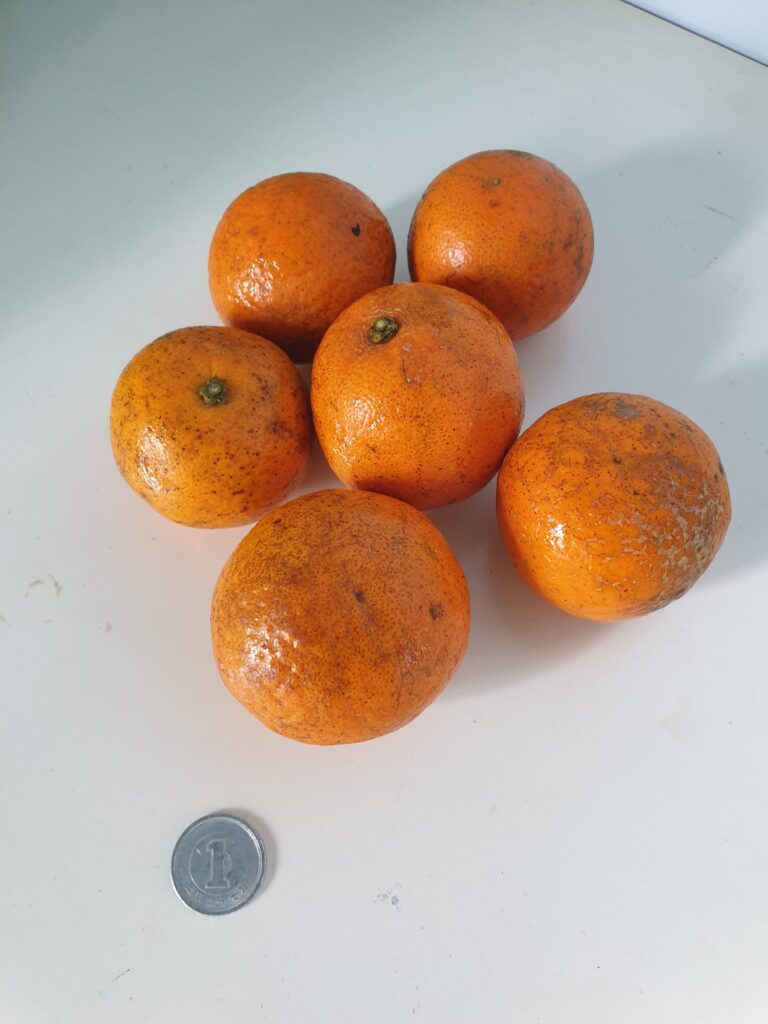
I also receive leaflets in Japanese describing Okinawan varieties and a presentation from the Okinawa Agricultural Research Center on serious diseases of citrus trees. I don’t even need to know Japanese to understand from the tone of voice that Japanese farmers take these diseases seriously. These are citrus canker, tristeza (CTV), phytophthora root rot, black spot and scab. None of these diseases are curable and most are associated with humid climates. This is the flip side of the coin of a suitable climate for growing citrus. The concentration of these serious diseases in Okinawa is considerable and it is good that local institutions are trying to do something about it. Among other things, this is one of the reasons why many trees here are propagated by seed, which has subsequently given rise to a large number of variations.
I say goodbye to the owners of the farm and set out to find more. I wished to find more Yukunibu, which gave the name to the whole group of crossbreeds Kunembo and Tanibuta.. So I drive to the nearby village of Katsuyama, where, according to scholarly publications, a specimen of Yukunibu has been found in the past. I park next to the community centre. It’s the low season and it’s not very busy. I pull out the last sign written in Japanese and start talking to the staff at the community centre. Mr. Kishimoto is very helpful, understands a little English, but above all is very skilled at using a translator. He immediately answers the phone and several calls follow, in between which I occasionally hear the word ‘Tanibuta’. This surprises me for a moment, as Tanibuta was not on my Japanese sign, I asked for Yukunibu. But an explanation quickly comes. Mr. Kishimoto called Dr. Kinjo, who was involved in the discovery of Tanibuta with Dr. Wu’s team and scientists from OIST(Okinawa Institute of Science and Technology), The University of California, The University of Florida and Resesearch institutes in Spain. Okinawa is a small island, as we would say here. Everybody knows everybody. Unfortunately, he couldn’t be reached, but he offers to take me to the nearby Katsuyama Shikwasa Juice Company, which also has a large collection of local citrus. They don’t have Yukuniba, but of course I can’t resist anyway. I leave the car in the parking lot and get into Mr. Kishimoto’s car, who drives me to the nearby factory. After a while, the director of the factory arrives and enthusiastically shows me the local collection. It’s very warm, although the language barrier prevents us from chatting a bit more. The demonstration orchard is almost devoid of local citrus, except perhaps for Yukunibu and Tanibuta. The latter because it has no commercial value. The seed content of the wild mandarin is so high that there is no room for juice. I enthusiastically look at the well-kept trees of several Shiikwaasa and also Kabuchii, Oto and Tarogayo. Finally, I get a bottle of Shiikwaasa juice for free. I have to say, I’ve never tasted anything so amazing. The juice is very aromatic, probably slightly sweetened, but it is not comparable to the industrial juices in Europe.
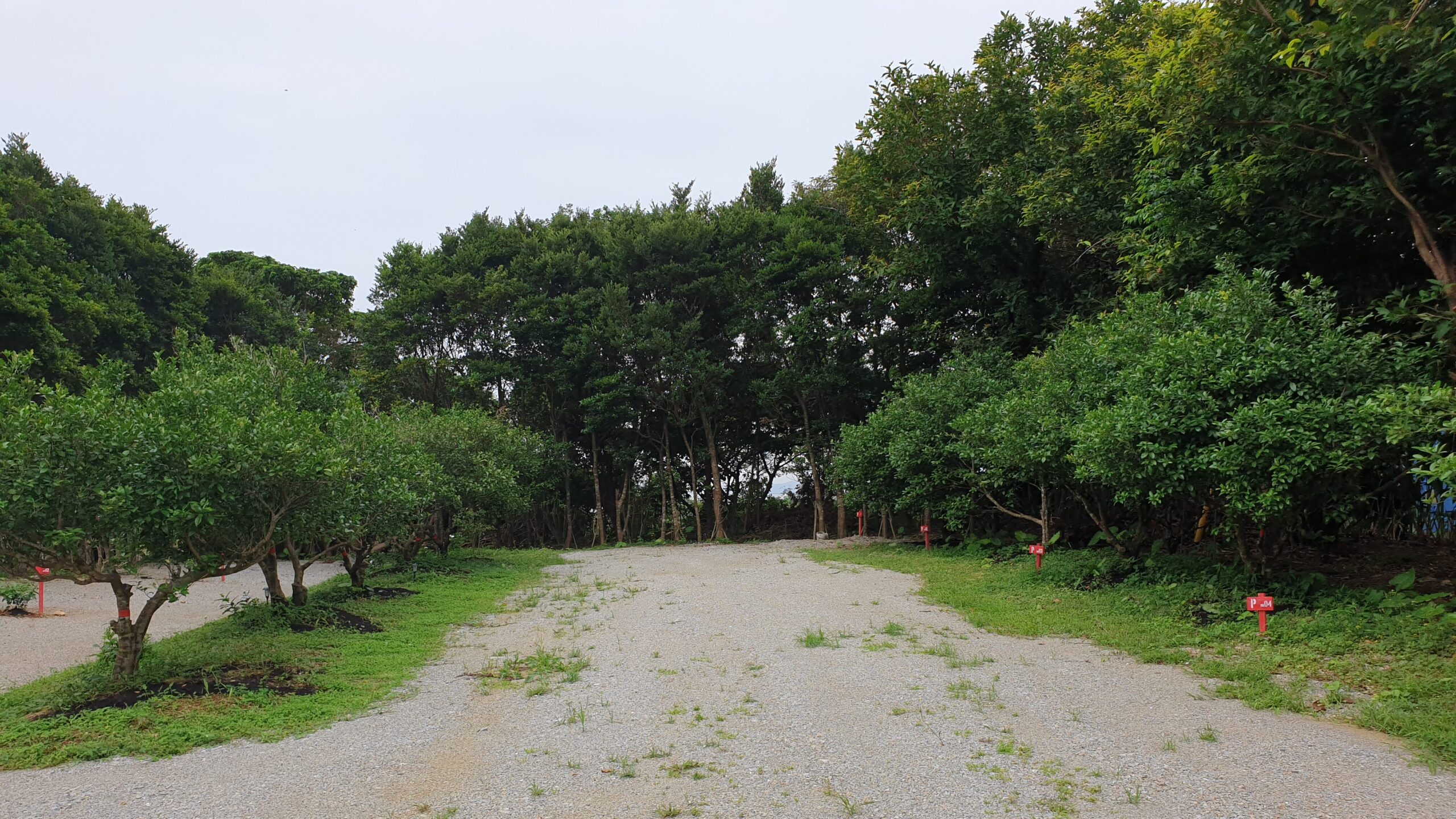
I leave my contact information with Mr. Kishimoto and he assures me that he will help me contact Dr. Kinjo. I will disclose up front that Dr. Kinjo did indeed get back to me after a few days and promised to show me the local environment and citrus on my next visit to Okinawa. By that time, I was determined to return to Japan again soon, as there is still so much to be explored.
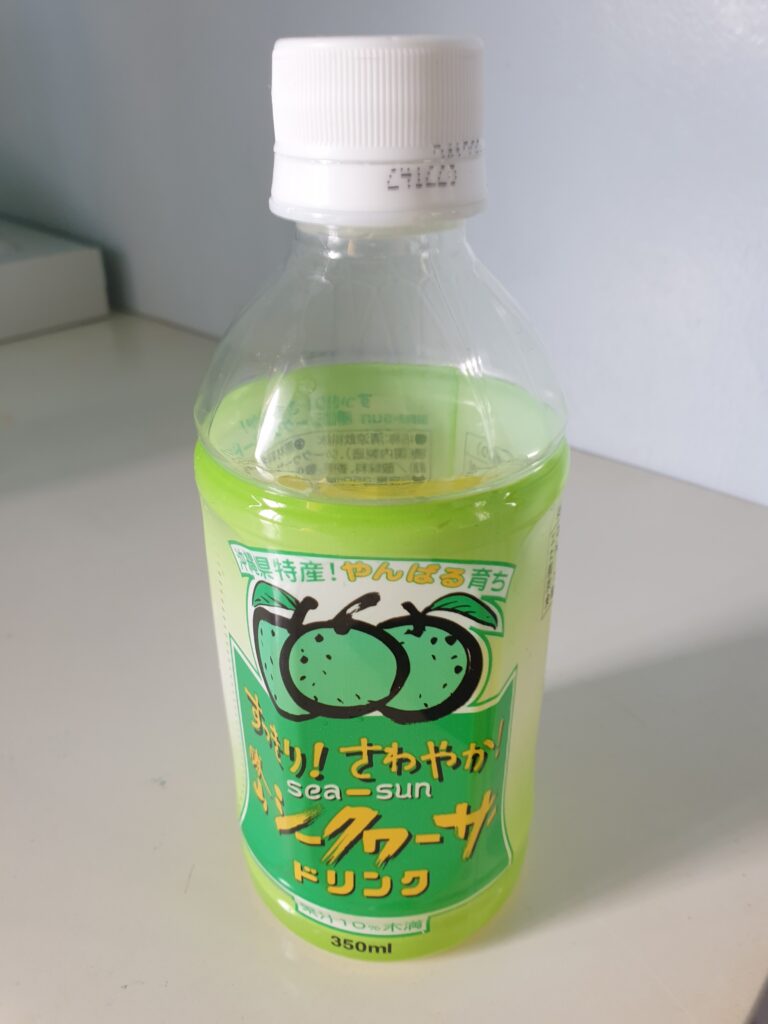
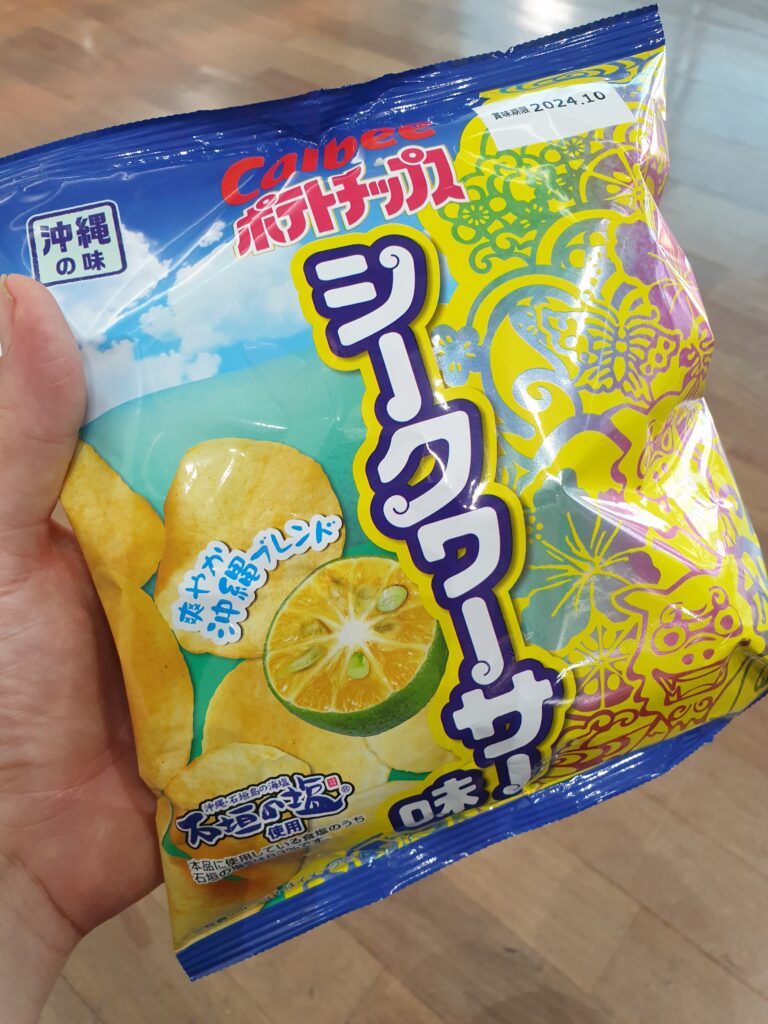
Today, however, I only have to return to the airport. I return my black Nissan with a tear in my eye to the rental shop and by evening I am at the nearby Okinawa airport. I take a late evening flight back to Tokyo, where I stay overnight in an airport hotel. I originally wanted to adventure to the famous capsule hotel, but when I found out there was no insulation between the capsules, I changed my mind. In the morning, there’s a bit of confusion at the airport, as my flight to Munich leaves from Terminal 3, not Terminal 1 where I landed. So there is still the search for a bus stop to take me to Terminal 3. But everything works out in the end, the flight goes smoothly and I land in Munich at 5:00 pm. The journey back to Prague is quiet, it’s May 1, a public holiday, and I’m already starting to look forward to my greenhouse and this year’s growing season.
I didn’t find everything in Okinawa, but I found a lot and especially a lot of experiences and nice people, which will remain wonderful memories.
Search for citrus trees in Okinawa – Business week in Tokyo – Day One – Day Two – Day Three – Day Four
